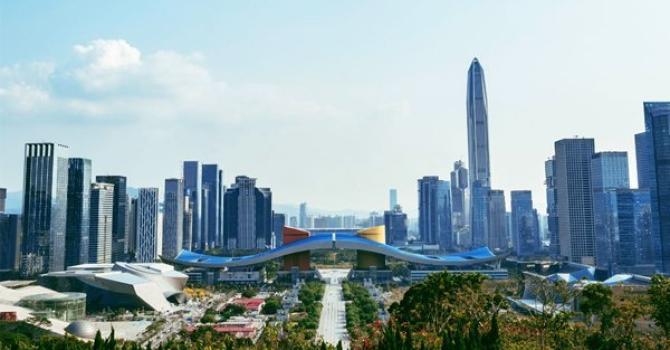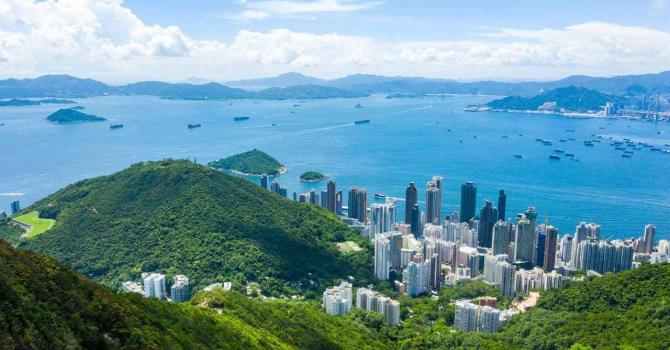A carbon-neutral Northern Metropolis. Now that’s a plan worth executing
The strategy for the Northern Metropolis makes sense because Hong Kong and Shenzhen will benefit by being better integrated. There has never been such an opportunity for long-term planning for this thriving neighbourhood. What better project could there be than to plan it, at this early stage, as a carbon-neutral metropolis?
After all, China has just provided the highest-level political guidelines for the “new development philosophy” to achieve carbon neutrality, issued by the Central Committee and State Council on October 24. The State Council has also subsequently issued a white paper on climate change policy and actions.
Under the Northern Metropolis Development Strategy, a total of 300 sq km will be transformed, and will include land for reindustrialisation, innovation and technology, housing and ecological protection. It would not be a long stretch to add carbon neutrality to the strategy as it already contains many positive environmental elements.
A climate-conscious metropolis is one that goes as far as possible to achieve carbon neutrality. This requires our officials to do more calculations upfront. There are plenty of academics and professionals keen to collaborate on this exercise.
This work will be laborious, admittedly – and hence may be resisted because it will be seen as taking too long – but it will be groundbreaking too, and will give Hong Kong an edge in gaining valuable expertise. It would also be a great opportunity to train locally based talent.
Hong Kong already has very strong talent in engineering and the built environment, both in government and the private sector.
An important job for them when they consider the metropolis is to design and build infrastructure to defend against sea-level rises, severe storms and landslides as a consequence of climate change.
Apart from the all-important question of the extent of the threats they need to plan for, they should favour methods that allow nature to play a bigger role. Social resilience is also important.
For example, with sea-level rises, it won’t be about just building high dams and giant gates. The Dutch experience – the best in the world, given that much of the country is below sea level – is to adopt a spatial philosophy of living with the water rather than struggling to defeat it.
The Dutch have designed and created ponds, lakes, parks, plazas and even garages that double-up as reservoirs when the seas spill over.
What can Hong Kong and Shenzhen learn from such ideas when reimagining a plan that integrates an entire neighbourhood? After all, we live in a coastal area that already faces a high risk of storm surges and sea-level rises, which will become worse in a warming climate.
Government planners and engineers are not oblivious to new ideas of managing water flow since Hong Kong regularly sees heavy rainfall. They have successfully built “blue-green infrastructure” in various parts of the city, combining natural and engineering functions that have proven to be better than the old methods of pouring a lot of concrete to channel water out to sea.
Across the border, the mainland has a policy for cities to do the same thing, using the term “sponge city”.
In other words, environmental design and engineering that mimic nature’s functions fit well with designing and implementing an integrated plan for both sides of the border. The metropolis provides the perfect opportunity for Hong Kong and Shenzhen to give full play to new ways of doing things on a large scale.
It also fits with the government’s idea that the metropolis should become an international innovation and technology hub and that there could be “urban-rural integration and coexistence of development and conservation”.
Hence, all developments should be environmentally sustainable, low-carbon and socially resilient. Buildings in the metropolis – indeed, in the whole of Hong Kong and Shenzhen – should be very energy and water efficient.
The mainland authorities are encouraging the incorporation of smart photovoltaic power generation into building development to boost renewable energy. We should adopt the same technology in Hong Kong and be the research and development centre. The government and private sector can work together on this transformation.
All infrastructure today has information and technology components – Hong Kong must focus on this area since it continues to invest in infrastructure.
Improving social resilience to the effects of climate change, such as flooding, severe storms and landslides, also involves information and technology. In addition, we can figure out whether such approaches can be carbon neutral or even carbon negative.
Plans for the Northern Metropolis includes a “proactive conservation policy” and there are plans to resume several hundred hectares of wetlands and fish ponds. How these and the large forest areas are managed will affect the carbon outcomes. There may be carbon “credits” that could be accumulated.
There is no reason Hong Kong cannot do all of these things as part of the Northern Metropolis strategy. Past frustration with inactivity often boiled down to a lack of imagination among leaders and bureaucrats being all too willing to pass the buck. Perhaps the Northern Metropolis provides a timely opportunity to set things right.
This article is written by Christine Loh, chief development strategist, Institute for the Environment, HKUST The article has appeared on SCMP - https://www.scmp.com/comment/opinion/hong-kong/article/3154910/carbon-neutral-northern-metropolis-now-thats-plan-worth



